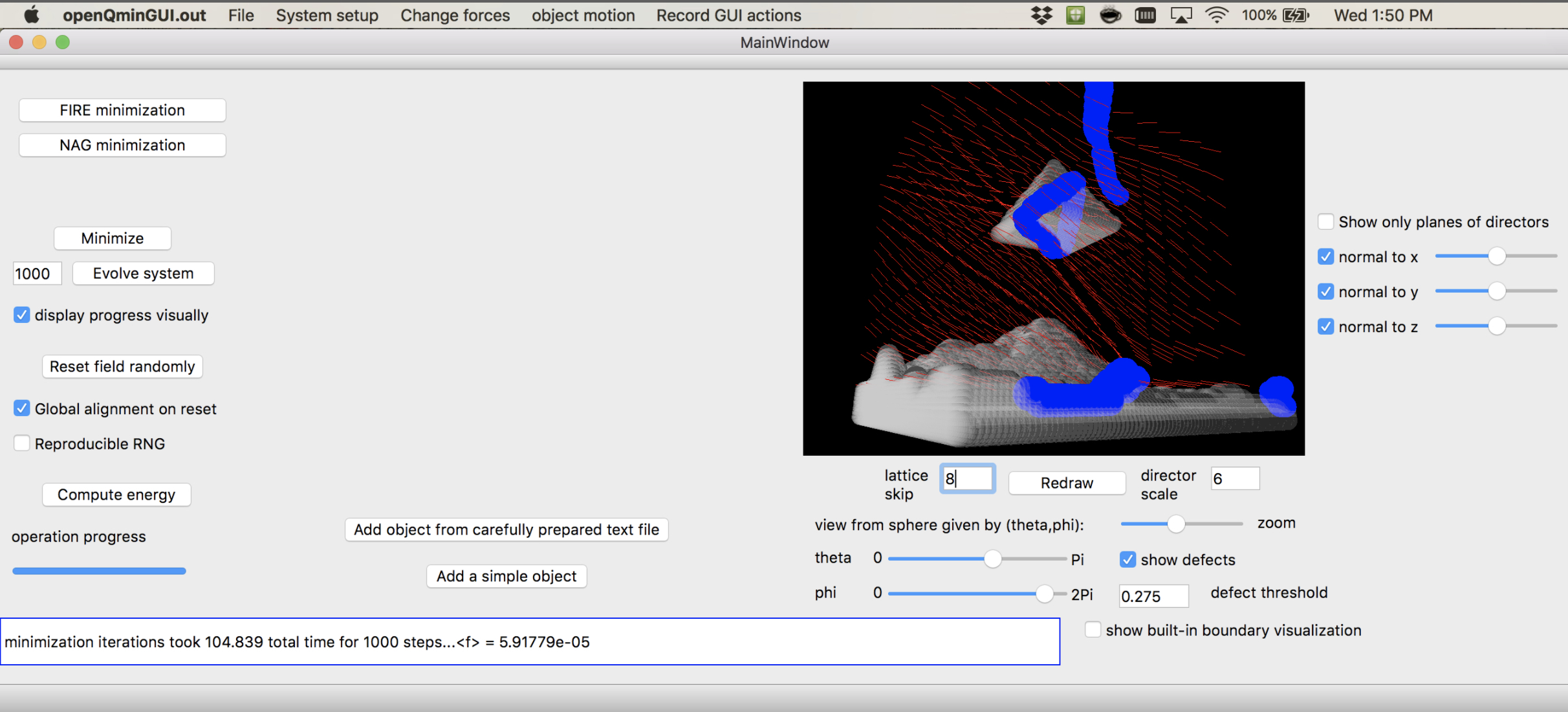Liquid crystal modeling
Daniel Beller and I have developed an open-source GPU-accelerated simulation platform for the phenomenological Landau-de Gennes Q-tensor approach to modeling liquid crystals, tied together in a graphical user interface. The current implementation is a numerical finite-difference relaxation technique which tries to minimize contributions from a nematic phase term, distortion (gradient) terms, and a variety of possible surface anchoring terms. See the video for a short demonstration, or checkout our documentation page for more details!
 In designing this package we targeted complementary goals of having an easy-to-use graphical user interface (both for educational purposes and to enable rapid prototyping of boundary conditions, interfacial features, and the defect states they can promote.
In designing this package we targeted complementary goals of having an easy-to-use graphical user interface (both for educational purposes and to enable rapid prototyping of boundary conditions, interfacial features, and the defect states they can promote.
 Simulataneously we wanted to be able to simulate large simulation domains of experimental interest. We make use of efficent, multi-core CPU and multi-GPU operation modes to scale up to systems at the supra-micron scale. Currently, our largest simulation involved over 15 billion lattice sites in a parameter regime corresponding to roughly 1400 cubic microns (using LdG parameters commonly used to model 5CB)
Simulataneously we wanted to be able to simulate large simulation domains of experimental interest. We make use of efficent, multi-core CPU and multi-GPU operation modes to scale up to systems at the supra-micron scale. Currently, our largest simulation involved over 15 billion lattice sites in a parameter regime corresponding to roughly 1400 cubic microns (using LdG parameters commonly used to model 5CB)